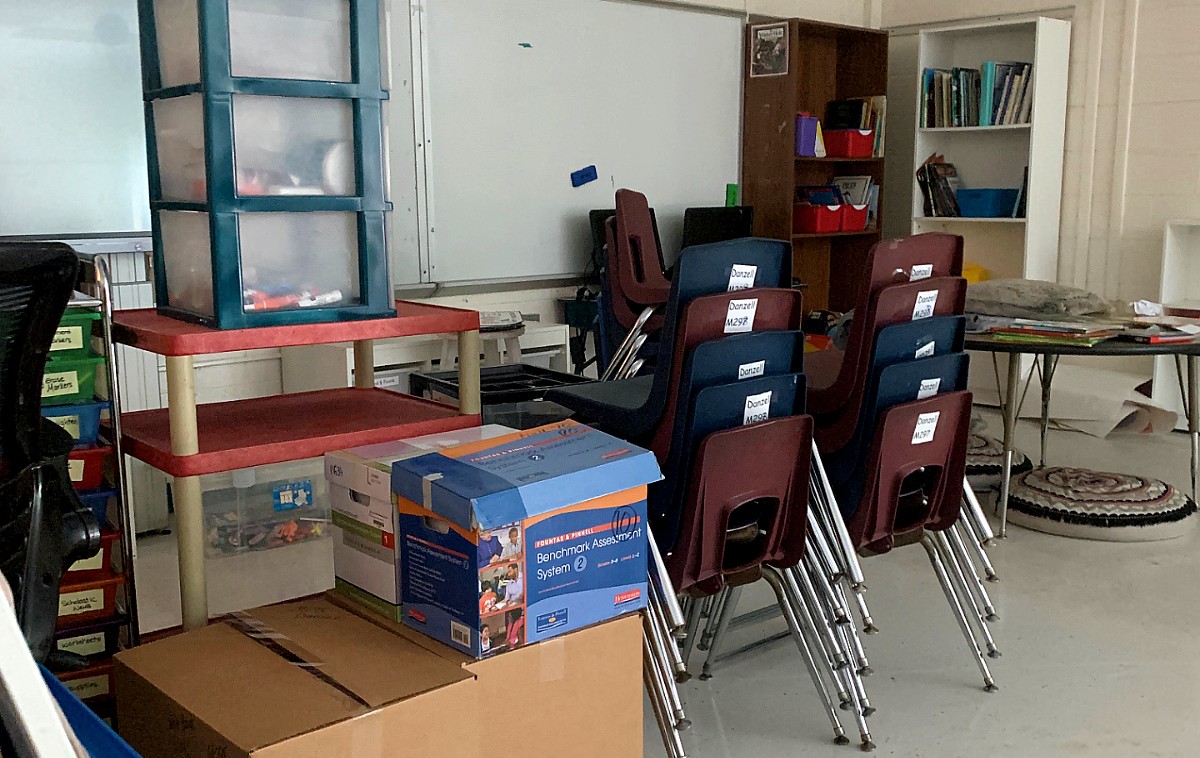
By Lindsay Street, Statehouse correspondent, May 14, 2020 | South Carolina’s crash course in virtual learning for K-12 students has left some of them further behind academically, according to state Superintendent of Education Molly Spearman.
By next month, the S.C. Department of Education will develop recommendations for the state’s 79 school districts on how to reopen schools safely as national experts say the virus will likely disrupt how people work and how students are educated through 2020 and into 2021.

“We’re looking at safety with protocols in place, how it’s all going to work,” Spearman told Statehouse Report this week. She added she is working with the governor’s taskforce, AccelerateSC, and with stakeholders to develop ideas. “It’s not going to ever be back to normal but for us to operate as close to normal as possible.”
Spearman said the digital divide — the ability for a household to access the technology and internet needed for education — is one of the biggest obstacles leading up to the fall semester. But whether a family has the technology isn’t the only obstacle, she said. Teachers and students will also have to interact differently, and there may be additional precautions taken to keep teachers, staff, students and families safe. Spearman said she is also working with the governor’s task force to reimburse districts on the purchase of cloth, reusable masks for the school year.

Teachers remain wary of returning to the classroom, however, according to SCforEd board member Dottie Adams of Columbia.
“We understand that education is the linchpin of people being able to fully return to work,” Adams said, adding that it needs to be done safely. “We’d love to go back but we need to have a lot of things in place.”
Summer school
Since public schools were closed March 15 as a precaution against coronavirus, students have lost 30 percent of in-person instruction time for the 2019-2020 school year.
The S.C. Department of Education is already planning to expand its summer reading program to include more grades and mathematics instruction, Spearman said. Up to 49,000 students will be able to qualify for the four-week program that, she said, could help students who have been left behind in the last 40-to-50 days of at-home instruction.
Spearman is also seeking six additional instruction days for struggling students at the start of the 2020-2021 school year. It will help teachers and staff assess educational and emotional levels of students after the long break, she said.
The summer can also provide a time to close the digital divide with internet and technology access, Spearman said. Seventeen school districts and 8 percent of students have had to go to paper-packet education, which requires students to handle two weeks of material at one time. The state’s 62 other school districts have either adapted fully online or have offered a hybrid. About one in three public school students was able to take a device home, according to the agency.
Challenges ahead

Shelli Quenga of the Palmetto Project questioned how many families in South Carolina have access not only to one computer, but enough computers and enough internet bandwidth for everyone in the family to work and obtain a quality education.
“Most low-income families use their phones for internet access,” Quenga said. And those phones may be free and with limited minutes.
Nearly two-thirds of public school students in the state are considered in poverty. The U.S. Census Bureau estimated in 2019 that 290,601 South Carolina households are without internet access.
“It really should highlight for elected officials just huge gaps in what, really now, are basic services,” Quenga said.
The U.S. Department of Agriculture’s Rural Development office in South Carolina has worked on bringing broadband to rural South Carolina since 2002.

“It’s been a slow trickling,” state Director Debbie Turbeville said. “We’re making some progress. There’s a lot more progress to make, but I would hope in the next two years we would really make a dent in high-speed internet in South Carolina.”
In the last year, there have been two rounds of federal funding in the state to expand broadband in rural areas. A third round is expected later this year, Turbeville said.
Spearman said school districts can receive funding through the CARES Act via the U.S. Department of Education to buy technology, upgrade devices and provide training for teachers.
According to Spearman, the state needs about 160,000 devices so that every student has a tablet or laptop, which would cost around $64 million. The S.C. Department of Education also has a list of free Wi-Fi spots and internet services on its website.
In an April presentation, the agency called for “financial support and logistics cooperation” to help accomplish expanded internet access and resources.
A new way to learn, to teach
When schools were shuttered, only 15 of the state’s school districts already participated in online education for a day or two of inclement weather. But, Spearman said, no one was prepared to educate online for weeks at a time.
The April 1 survey of 3,818 teachers found 39 percent had concerns about student learning, resources for distance learning, professional development and teacher requirements. About 18 percent of teachers reported they lack sufficient resources or any resources to lead remote learning.
Adams said while some students don’t have internet access, the same is true of some teachers.
“If you’re a teacher and you don’t have Wi-Fi at your house that’s its own hurdle,” she said.
Spearman said even students with internet access can struggle as parents feel they are unable to teach their children due to their own education levels or work obligations.
“That’s really been a challenge,” she said, adding that her advice is: “Do the best you can and we will be there to support you.”
Spearman said more professional development will be available to teachers over the summer, and that some of the training could come from virtual charter schools.

April Pelt, digital learning specialist at Clemson University, teaches K-12 teachers how to design online courses. Clemson University is launching an online-teaching certificate for teachers this summer that has been in the works for years.
Pelt said the current Band-Aid approach is “not going to serve the students well.”
Teachers have mostly learned how to teach based on a “face to face model,” Pelt said, adding that they often rely on visual cues to gauge students’ absorption of content. Pelt also said teachers not used to teaching online can sometimes overwhelm students by putting out too much content in an effort to keep students on track in a “fire hose” approach.
Pelt said teachers and students need to move away from the “mama bird” approach of education, where students receive content passively, and students need to become more actively engaged when content moves online.
Adams said under the current model of public education students are “spoon fed education” in preparation for tests, and students are sometimes passed onto the next grade without a real understanding of material.
Spearman said one of the silver linings to the current educational experiment has been the lack of testing.
“It’s causing us to focus even more on the foundational standards students need to know. It’s been good for us to take a break from so much testing and we can evaluate how that’s worked,” she said.



In addition to paper packets, students without internet access can be provided with course materials recorded on CDs or DVDs. An amazing amount of material can be recorded on these media and provided cheaply to students. We were recording college classes and providing them to students back in 2000.
Pingback: Charleston Currents – NEW for 5/18: Reigniting economy; Some good news; More
Pingback: Charleston Currents – NEWS BRIEFS: Charleston reps call for curbs on citizen arrests
Pingback: Statehouse Report: SC Digital Divide – Education Media Center